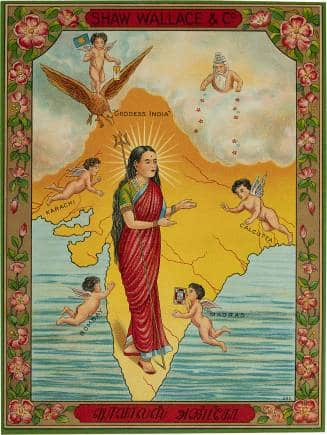



Bengaluru has its fair share of art museums; the prominent ones being the Karnataka Chitrakala Parishath, the National Gallery of Modern Art, the Government Museum which is housed in a gorgeous red neo-classical building and the nearby Venkatappa Art Gallery which houses, among other collections, artist K.K. Hebbar’s works. And soon, walking distance from the Government Museum and the Venkatappa Art Gallery on Kasturba Road, a new private museum will open up to visitors: The Museum of Art and Photography, popularly known as MAP.
As a private museum, MAP has the potential to solve the problem of contemporary art. Let me explain.
Most of the government museums have not really updated their collection to encompass works by contemporary artists. MAP’s founder, Abhishek Poddar, has not only created a space for displaying contemporary works, but he has also been an advocate for photography works. In his earlier avatar as the founder of Tasveer, a gallery devoted to photographs, Poddar was a champion for such works. According to him, museums in India have generally not been able to rethink their curation or engagement model such that diverse audiences feel welcomed into their spaces.

“The primary motive behind starting MAP is to reduce the distance that art has within the community,” Poddar said. “In India, there seems to be a sense of intimidation and elitism that comes with museums and galleries. MAP aims to move away from that perception and to make art and the museum engaging for the community.”
To be sure, museums from Dr Bhau Daji Lad Mumbai City Museum to the National Museum in Delhi and even Bengaluru's NGMA have been designing outreach programmes to bridge this gap.
Poddar also outlines what MAP really needs to do: “We plan to provide programmes that give multiple voices and identities, a space to express themselves. Being a digital-first museum, we have also paid great attention to the changing trends in the modern art space and we offer an experience that is immersive and holistic using technology, virtual programming, including exploring the scope of artificial intelligence and augmented reality.”
So, before even stepping into the 44,000 sq ft space, there was an excitement of what I would get to see. In the atrium basking in natural light, there is Israeli artist Arik Levy’s sculpture and a reception desk designed by the artist.
 Artist's impression of MAP Bengaluru.
Artist's impression of MAP Bengaluru.Catching the attention of visitors is a digital board with traditional oil lamps, some lit with names below. Scanning a QR code will help get access to the lamps which will be lit with the viewer’s name – all the time they are in the museum. Catchy!
Walking by a well-designed art shop, one accesses a gallery which has L.N. Tallur’s sculptures on display. There are three floors having collections displayed under six sections: Modern and Contemporary art, Photography, Living Traditions, Popular Culture, Textiles, Craft and Design and Pre-Modern Art. Interestingly, all the genres are visible in all the floors instead of separate galleries for each and the curation works in making it all seamless.

One of the floors has what MAP calls ‘India’s most comprehensive collection of artist Jyoti Bhatt’ and features drawings, paintings and photographs by Bhatt.
Incidentally, MAP has a ‘growing collection’ of 60,000 works of art, predominantly from South Asia and dating back from 10th century to the present. Poddar has been a collector, and several works are from his personal collection. “My journey as a collector began a long time ago and I was fortunate enough to be around art and artists my whole life. I had the opportunity to learn, understand and develop an eye for art from great artists and historians and like M.F. Husain, Manjit Bawa, Meera Mukherjee, Mapu, Dashrath Patel, among others.”
There is a library on the second floor which has books, some of them are in-house publications by MAP, as well as a sculpture by artist Ravinder Reddy placed rather incongruously on a cupboard. The reason becomes clear when one goes to the higher floor and can view the sculpture clearly. In fact, Levy’s sculpture in the atrium can be viewed from the higher floors as well.
MAP plans to have free entry to the museum and ticketed exhibitions. The inaugural exhibitions feature works by L.N. Tallur and Steven Cox. Poddar’s plan is to create a “museum-going culture here by making museums interesting spaces of storytelling, ideas and culture, rather than just a storehouse of artefacts.” Will MAP be like other contemporary museums like say, the New Whitney in New York City? You could ponder over the question at the rooftop ‘fine dining’ restaurant or else in the ‘members-only’ lounge.
 Photograph by Jyoti Bhatt.
Photograph by Jyoti Bhatt. Discover the latest Business News, Sensex, and Nifty updates. Obtain Personal Finance insights, tax queries, and expert opinions on Moneycontrol or download the Moneycontrol App to stay updated!
Find the best of Al News in one place, specially curated for you every weekend.
Stay on top of the latest tech trends and biggest startup news.